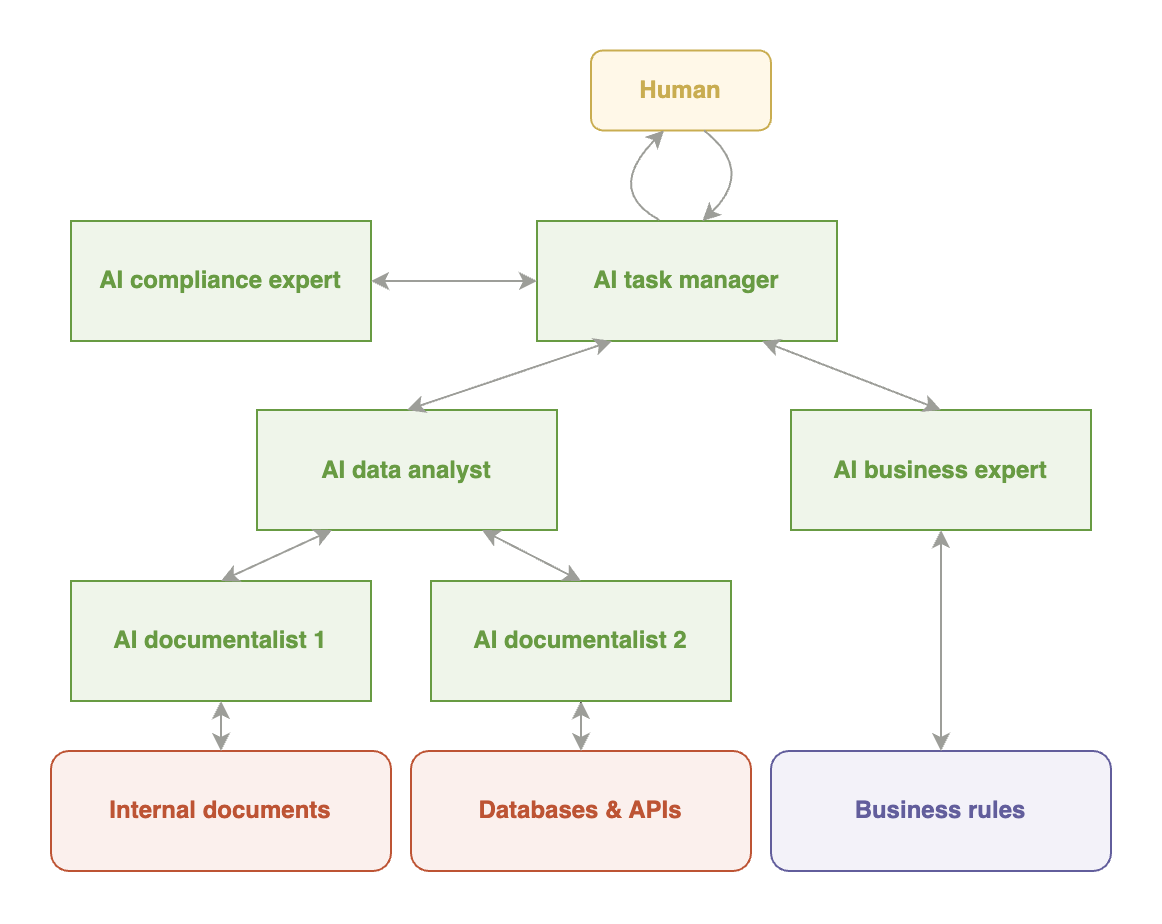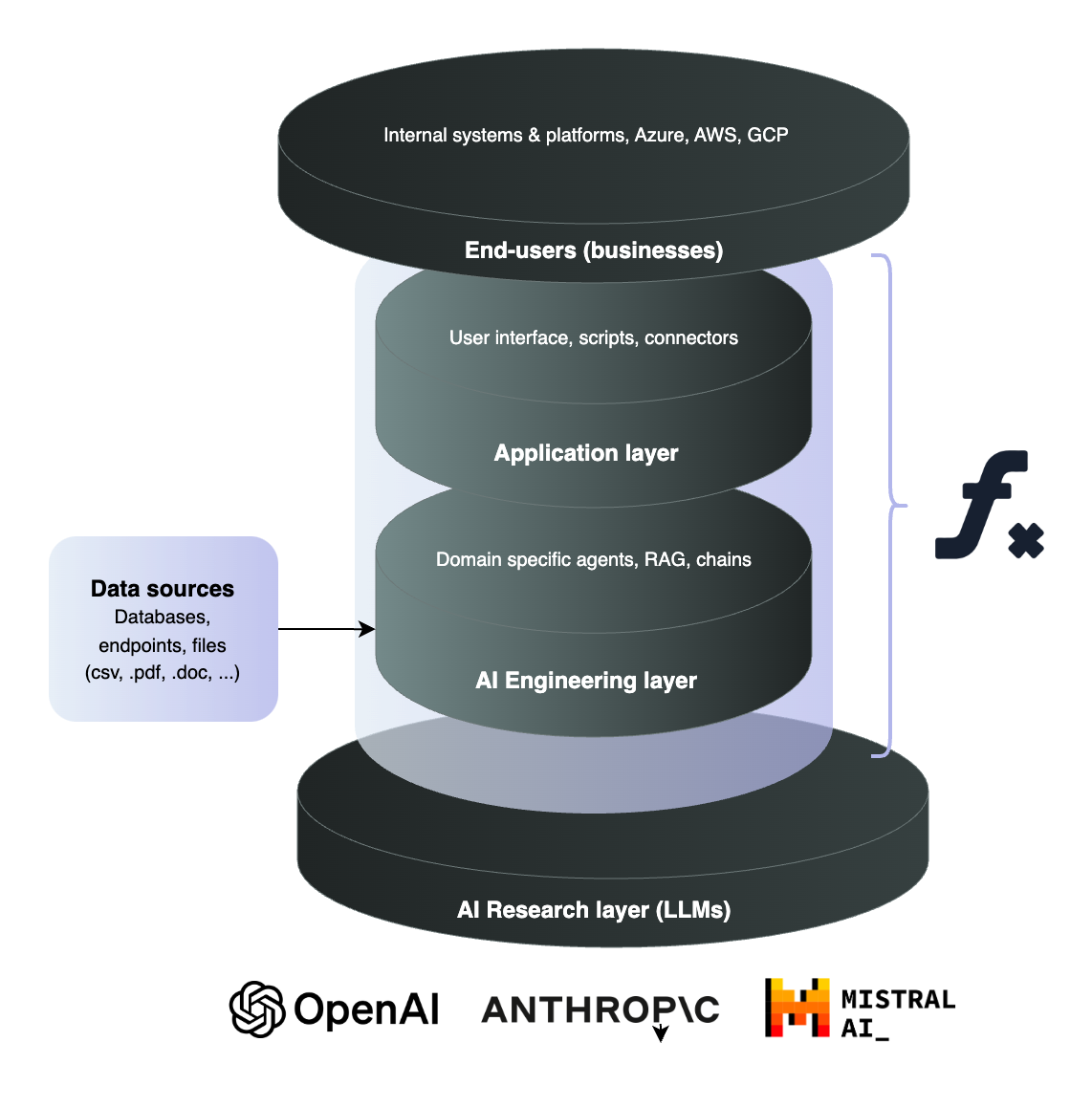The limit of chatbots
Despite their impressive capabilities, generic AI tools like ChatGPT often lack common sense. If you’ve ever tried drafting an email with a chatbot, you’ve probably experienced the need for multiple revisions, rewordings, or even pasting in external content just to get your point across. Sometimes it over-explains, sometimes it’s too generic — and often, it just doesn’t get it right the first time.
But why? Why does an “intelligent” tool like ChatGPT need so many iterations to understand something a human would grasp intuitively — like the tone of an email?
The core difference is that we humans operate with intuition. Our common sense is built from lived experiences, subconscious synthesis of context, and memory. We know what’s relevant because we’ve been there before. Chatbots haven’t. They don’t “lack intelligence” per se — they lack intuition because they’re disconnected from context and reality.
ChatGPT: brilliantly average by design
Most generative AI models, like ChatGPT, are trained to be general-purpose. They’re built to reflect the average of all public knowledge available online. That makes them highly versatile — but also shallow when it comes to deep business insights.
When faced with domain-specific challenges, generic models struggle. Without access to your company’s documents, business rules, context, or processes, they can’t distinguish what’s important from what’s noise. They can’t prioritize, contextualize, or adapt unless explicitly guided.
So what would the ideal AI actually look like?
It wouldn’t just be a chatbot. It would be a true business expert — securely connected to internal systems, documents, and communication channels. The perfect AI would understand the context of your organization, the decision-making logic shaped by years of experience, and the way your team actually works.
This AI would know the specifics, nuances, risks, and tradeoffs unique to your domain. It would be thoughtful, not reckless — innovative, yet grounded in the realities of business.
 Example of an agentic, connected AI system
Example of an agentic, connected AI systemMost importantly, it wouldn’t just help you think — it would help you act. It would serve as an extension of both the mind and the hands: sending emails to clients, filing IT tickets, searching internal and external sources in order to draft the perfect report or presentation — all seamlessly integrated into your workflow.
In short, the ideal AI is not a chatbot in a wrapper. It’s a deeply embedded, business-aware partner. It blends the insight of your most experienced colleague with the speed of AI — and the ability to take real action.
The ideal AI is deeply connected to reality.
Connecting AI: the AI application layer
So there we have it: having powerful models is not enough. What matters is what we build on top of them. This is where the AI application layer comes into play.
The AI application layer consists in the engineering, connections, and workflows that can be built on top of language models in order to augment them. The purpose is to build the missing middle between raw AI models and real-world business challenges. That layer is made up of :
- smart agents that understand workflows, data, and objectives,
- connectors to tools that allow AI to take actions, for example leveraging the Model Context Protocol (MCP) on: CRM softwares, ERP platforms, file storages, databases, internal APIs, calendars, messaging and ticketing systems,
- custom user interfaces designed around specific roles and tasks,
- domain rules and guardrails to ensure consistency, security, and trust,
- memory and context to retain knowledge across interactions and make better decisions over time.
 The AI application layer connects language models with end-users and external context.
The AI application layer connects language models with end-users and external context.This is where the real complexity lies — and where the real value is created. Most businesses haven’t built this layer yet.
Yet today, many organizations are still experimenting at the surface — using chatbots as productivity tools, manually prompting them, copying and pasting between systems. This approach is not secure, and does not scale.
At Fonction Labs, we’re engineering intelligent systems. This means designing AI applications that interact with people, tools, data, and decision-making processes.
This is the shift from using AI to deploying AI. From playing with prompts to building purposeful, embedded systems. From assistants to operators.
It is the frontier of operational AI, and our focus with Matthieu and Antoine.
Our vision forward
We believe the future of AI adoption will come from making the AI application layer accessible — especially for small and medium-sized enterprises. These companies often lack the internal resources of large enterprises, but they can move faster and innovate with purpose.
With the right AI systems, they can stay competitive in a globalized economy led by major players. Our mission is to drive AI adoption within the French economic landscape.
